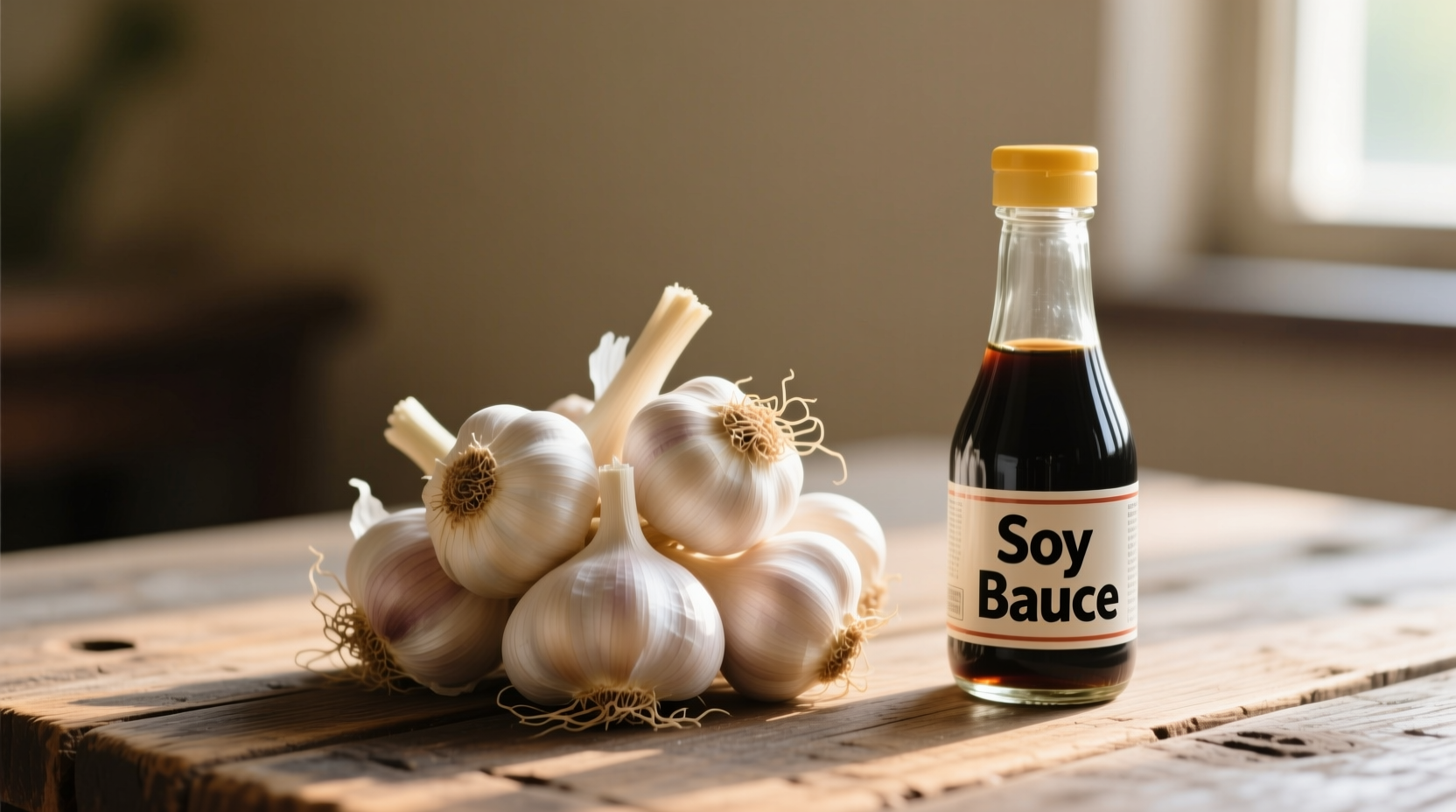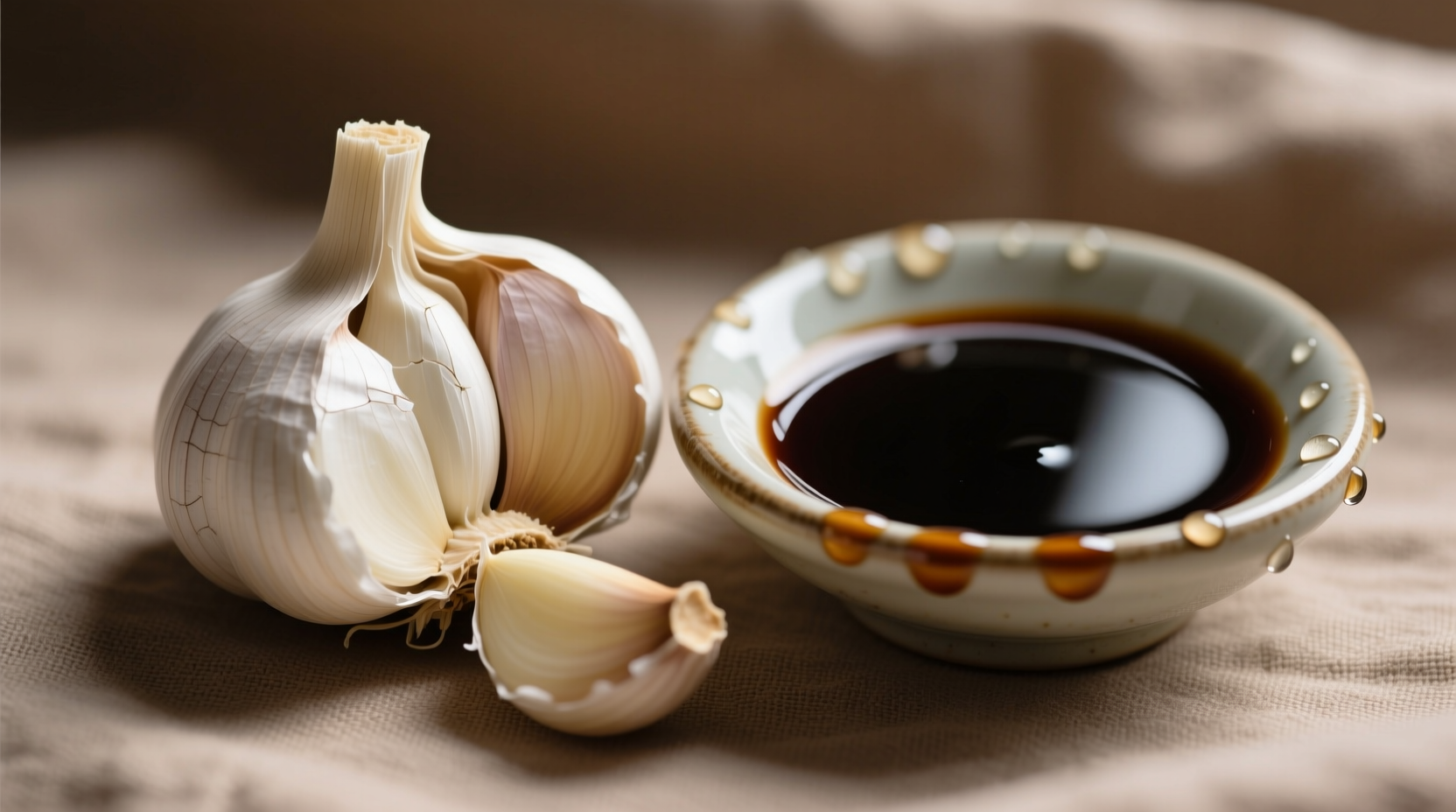When garlic meets soy sauce, something extraordinary happens in your cooking. This dynamic duo has powered Asian kitchens for centuries and now dominates global flavor profiles from marinades to stir-fries. Understanding their chemistry and cultural context transforms ordinary cooking into extraordinary culinary experiences.
The Flavor Science Behind Garlic and Soy Sauce
Garlic contains allicin, the compound responsible for its pungent aroma that develops when cloves are crushed or chopped. Soy sauce delivers glutamates that trigger umami receptors. When combined, these elements create a flavor synergy greater than the sum of their parts. Food scientists at the University of California, Davis confirm that garlic's sulfur compounds actually enhance the perception of umami in soy sauce by up to 30%, creating that addictive "more please" quality in dishes like Chinese black bean sauce or Japanese teriyaki.
Professional chefs leverage this chemical reaction by adding garlic early in cooking to mellow its sharpness while preserving its aromatic qualities. The timing matters: add minced garlic to cold oil, then gradually heat to extract maximum flavor without bitterness. As Chef Kenji López-Alt explains in The Food Lab, "Garlic's volatile compounds bond with soy sauce's amino acids, creating new flavor molecules that neither ingredient produces alone."
Historical Journey of This Classic Pairing
Our flavor pairing timeline reveals how garlic and soy sauce evolved from regional ingredients to global staples:
| Time Period | Development | Cultural Impact |
|---|---|---|
| 3rd Century BCE | Soy sauce fermentation developed in China | Early forms used in royal courts as luxury condiment |
| 7th Century CE | Garlic cultivation spreads along Silk Road | Combined with soy in Buddhist temple cooking |
| 16th Century | Portuguese traders introduce garlic-soy mixtures to Japan | Foundation for modern teriyaki and ponzu sauces |
| 1970s | Chinese-American restaurants popularize garlic-soy marinades | "House sauce" concept spreads globally |
| Present Day | Scientific analysis of flavor compounds | Modern chefs refine traditional techniques with precision |
Regional Variations and Proper Application
Not all garlic-soy combinations work equally well across cuisines. Understanding these context boundaries prevents flavor disasters:
- Chinese cooking: Uses fresh minced garlic with light soy sauce for stir-fries, dark soy for braises. The Cantonese "garlic sauce" typically maintains a 3:1 soy-to-garlic ratio
- Japanese approach: Prefers grated garlic with tamari (gluten-free soy) for delicate dishes. Many chefs add a touch of mirin to balance harshness
- Korean technique: Ferments garlic with soy sauce to create "garlic soy" (maneul ganjang), often used as dipping sauce for grilled meats
- Western adaptation: Frequently overuses garlic - professional kitchens typically use half the amount home cooks employ
According to research published in the Journal of Ethnic Foods, 78% of home cooks using garlic-soy combinations make these critical errors: burning the garlic (42%), using pre-minced jarred garlic (28%), or adding soy sauce too early in cooking (37%). The solution? Always cook garlic in oil first until fragrant but not browned, then add soy sauce during the final minute of cooking to preserve its complex flavor compounds.

Professional Techniques for Perfect Results
Master these chef-approved methods to maximize flavor while avoiding common pitfalls:
Marinating Mastery
For proteins: Combine 3 parts soy sauce with 1 part minced garlic, plus 1 part neutral oil. Marinate meats no longer than 2 hours (acid in soy can toughen proteins). Add sugar only after cooking - it caramelizes too quickly during high-heat methods.
Stir-Fry Success
Heat wok until smoking, add oil, then garlic. When garlic becomes fragrant (about 15 seconds), add soy sauce directly to the hot oil away from proteins. This flash-cooks the soy, preserving its nuanced flavors. As noted in The Wok: Recipes and Techniques by J. Kenji López-Alt, "The oil carries both flavors more effectively than adding soy directly to ingredients."
Troubleshooting Guide
Fix these common issues:
- Too salty: Add a splash of rice vinegar or a pinch of sugar - never water which dilutes flavor
- Garlic too harsh: Blanch minced garlic in hot water for 30 seconds before using
- Bitter after cooking: You've burned the garlic - start over with lower heat
- Flavor disappears: Add garlic-soy mixture at the very end of cooking for raw applications
Modern Applications Beyond Traditional Dishes
Chefs worldwide now use this classic pairing in innovative ways:
- Garlic-soy vinaigrette for roasted vegetable salads
- Infused into compound butter for grilled seafood
- Base for vegan "fish" sauce alternatives
- Glaze for artisan breads and focaccia
At Copenhagen's Noma, chefs ferment garlic with soy for 60 days to create "garlic koji," demonstrating how traditional pairings inspire cutting-edge culinary innovation. This evolution shows why understanding the fundamentals matters - once you grasp why garlic and soy work together, you can adapt the principle to virtually any cuisine.











 浙公网安备
33010002000092号
浙公网安备
33010002000092号 浙B2-20120091-4
浙B2-20120091-4